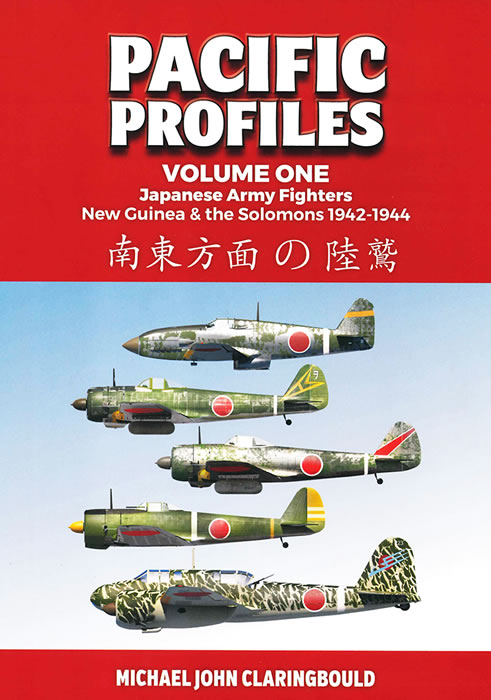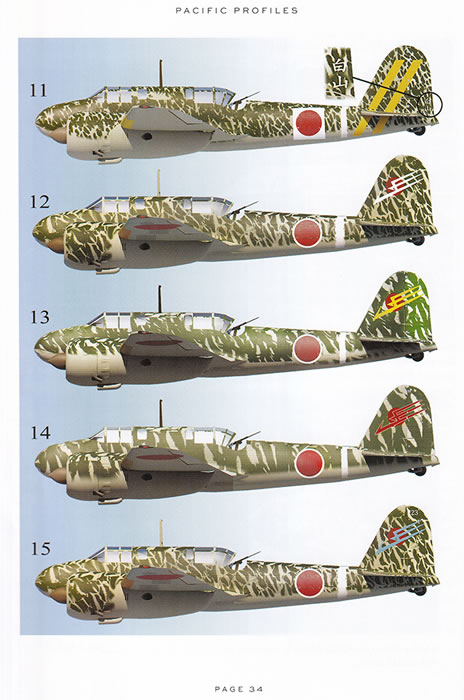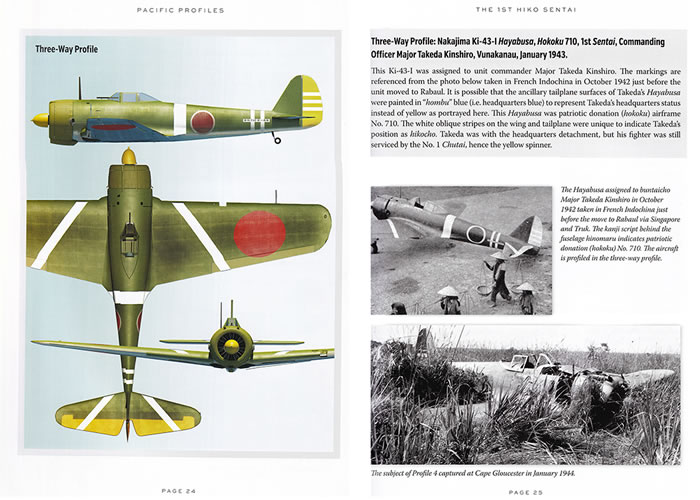Pacific Profiles Vol 1
Japanese Army Fighters
New Guinea & the Solomons 1942-1944
by Michael Claringbould

Avonmore Books
S u m m a r y : |
Catalogue Number, Description and ISBN: |
Pacific Profiles Vol 1
Japanese Army Fighters
New Guinea & the Solomons 1942-1944
by Michael Claringbould
Avonmore Books |
ISBN: |
978-0-6486659-1-5 |
Contents & Media: |
104 pages, 25cm x 18cm , many colour profiles and photographs of those aircraft. |
Price: |
A$34.95 plus shipping available online from Avonmore Books and hobby book retailers worldwide |
Review Type: |
First Look |
Advantages: |
Detailed and comprehensive look at the fighter aircraft of the Japanese Army in the South Pacific from 1942 to 1944, with excellent informative text, historical photos and matching aircraft profiles, as well technical information on the aircraft. |
Disadvantages: |
None. |
Conclusion: |
A great, should have, reference for modellers of all scales interested in the Pacific theatre from the start in WWII. |
Reviewed by David Couche

This book, the “Pacific Profiles Vol 1, Japanese Army Fighters, New Guinea & the Solomons 1942-1944” describes the fighter aircraft of the Japanese Army, used in aerial warfare and based in New Guinea and the Solomon Islands from 1942 until 1944, during which air operations by both sides became a daily occurrence.

Michael Claringbould, the author, presents this book in chapters on each of the Japanese Sentai (or Squadron in translation).
Before getting into each of these Sentai, he provides an overview, in 3 pages with maps, of the Japanese Army Air Force in the South Pacific and where each of the Sentai are based to set the scene for the rest of the book. He then provides technical notes on each of the aircraft types that were operated in this area. This is followed up by some notes on the various markings used by these groups.
The book then consists of 11 chapters on each of the Sentai, listed below and a final chapter on captured aircraft.
The chapters are:
-
The JAAF in the South Pacific – An Overview
-
Technical Notes
-
Notes on Markings
-
The 1st Hiko Sentai –flying Ki-43 Hayabusa
-
The 11th Hiko Sentai - flying Ki-43 Hayabusa
-
The 13th Sentai - flying Ki-43 Hayabusa & Ki-45 Toryu
-
The 24th Hiko Sentai
-
The 33rd Hiko Sentai
-
The 59th Hiko Sentai
-
The 63rd Hiko Sentai
-
The 68th Hiko Sentai
-
The 77th Hiko Sentai
-
The 78th Hiko Sentai
-
The 248th Hiko Sentai
-
Captured and Restored Aircraft
-
Postscript
Each of these Sentai has detail notes on what type of aircraft flew in that Sentai, at what time period as well as other valuable information. Each chapter follows the same construction with written text on that Sentai, a page (and often more than one page) of numbered aircraft profiles with more detailed notes on the adjoining page. There are original historical photographs of those aircraft which provides an excellent reference for those of us who are modellers. Some chapters have very rare colour photographs of the respective Japanese aircraft. I have given you the first of the Sentai’s chapter as a complete scan so you can see the detail that the author goes into, and this is the smallest chapter in the book. I have also added a few teasers of the various other aircraft covered.

There is a small chapter with the aircraft captured and/or restored, mainly by the US forces and in US markings. The book ends with a small Postscript from the Japanese commanders
point of view, as well as a list of relevant sources and acknowledgements.
This book has been produced for the aviation enthusiast of the early South Pacific theatre of operations involving Japanese air units.
This is the first of a series by Michael Claringbould on aircraft of the Pacific Theatre in WWII. Watch this space for more of the series to follow.
For the modeller there is plenty of colour reference material in profiles etc. supplied as well as some good period photographs of aircraft.
All in all, this book is a good read and useful for the modeller.
Well recommended.
Many thanks to Avonmore Books for the review sample.
Review Copyright © 2022 by David Couche
This Page Created on 22 February, 2022
Last updated
22 February, 2022
Back to HyperScale Main Page
Back to Reviews Page

|
